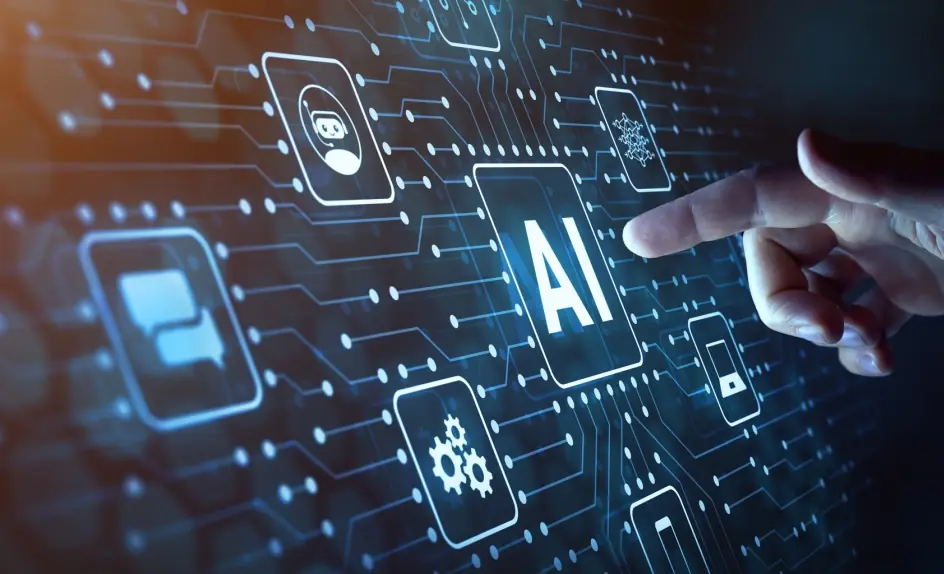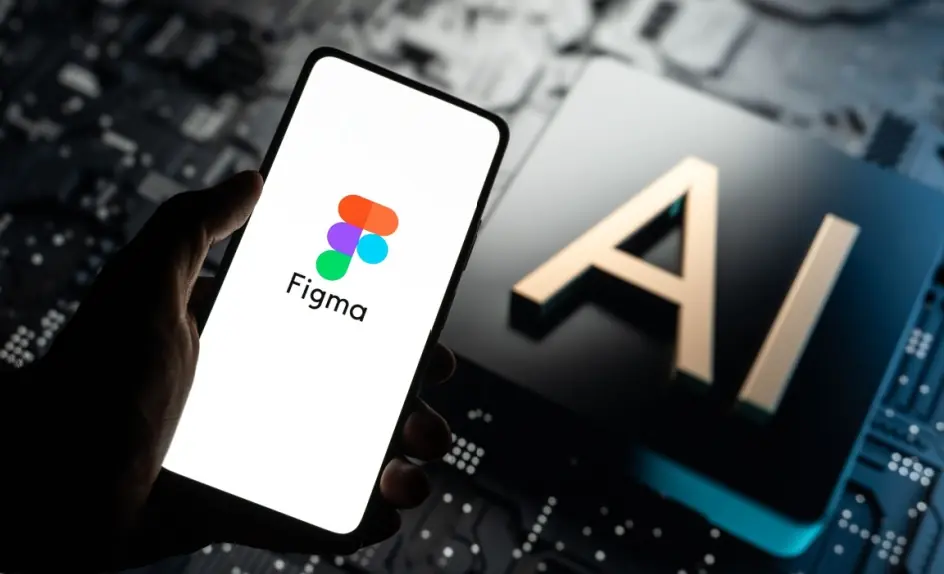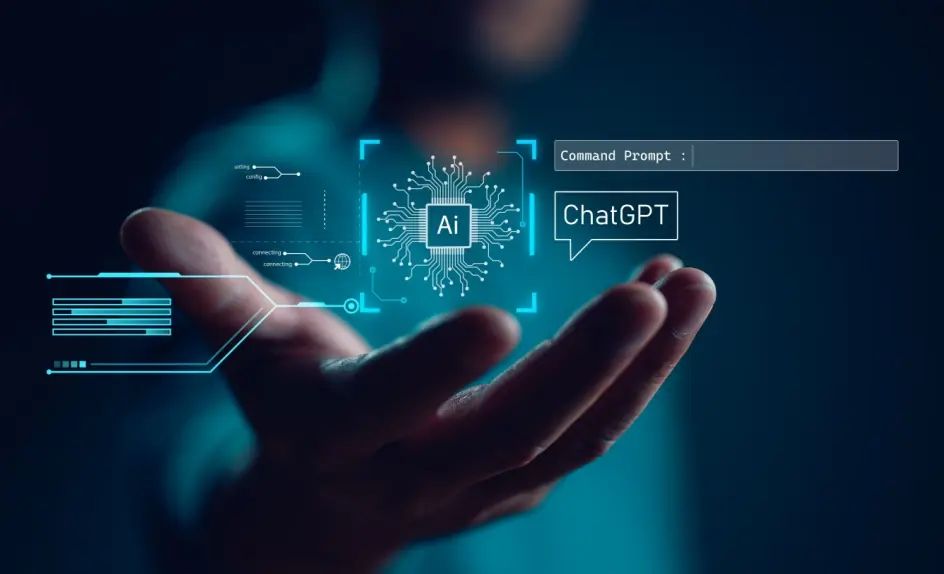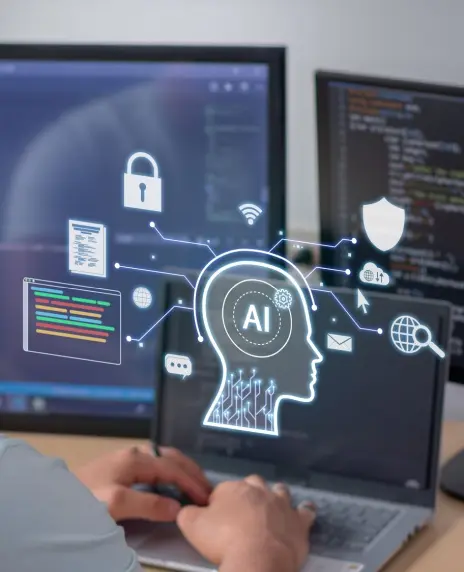AI in UI UX design is a game-changer, revolutionizing how we approach user interfaces and user experiences. With the integration of AI UI design, designers can streamline the design process, focusing on creativity while artificial intelligence handles repetitive tasks. The impact of AI on UX design is profound, enhancing efficiency and ensuring a seamless user experience. In this article, we’ll delve into the role of AI in UI UX design and its influence on user experience through the use of artificial intelligence.
Artificial intelligence is transforming UI UX design by automating repetitive tasks and offering data-driven insights. This not only improves the design process but also enhances the overall user experience. The impact of AI is evident in how it shapes design choices, making interfaces more intuitive and user-friendly. We’ll explore topics such as the current role of AI in UI UX design, challenges, and ethical considerations, five ways to use AI to improve UX design, integrating AI tools with Figma, the pros and cons of using AI tools for UI UX design in Figma, and the future of AI in UI UX design. Stay tuned to learn more!

What does AI in UI UX Design mean?
AI in UI UX design means using artificial intelligence to help create user interfaces (UI) and user experiences (UX). This involves using machine learning to analyze data, automate repetitive tasks, and make the design process more efficient.
One big advantage of AI in UI UX design is that it handles boring, repetitive tasks. For example, AI can turn design sketches into mockups. This saves UI designers time and lets them focus on more creative work. AI can also analyze user data, giving UX designers insights into user behavior. This helps them create more personalized and engaging experiences.
AI also improves the design process by offering predictive analytics and usage insights. This helps designers make data-driven decisions to optimize user interfaces. It also improves user experiences. For example, AI can find patterns in user behavior. It can also detect anomalies. Based on this, AI suggests changes to improve user satisfaction.
Using machine learning, designers can automate the optimization of design elements. This ensures every part of the website design is well-tuned for better performance. AI helps designers enhance the user experience by using artificial intelligence. This creates more intuitive, responsive, and user-friendly interfaces. This technology ensures that design elements are both visually appealing and functionally efficient. This leads to better overall user satisfaction.

How does Artificial Intelligence (AI) impact UI UX Design?
Artificial Intelligence (AI) significantly impacts UI UX design in many ways. Here are ten key ways AI transforms this field:
1. Personalization
AI in UI UX design creates personalized user experiences by analyzing user data. AI algorithms tailor content, recommendations, and interfaces to individual preferences. This makes interactions more engaging and relevant.
2. Automated Design
AI-powered design tools can automate repetitive tasks like generating design layouts or color schemes. Designers and developers can then focus more on the creative and strategic aspects of their work.
3. Predictive Analytics
AI in UI UX design uses AI algorithms to analyze user behavior and predict trends. This helps designers make data-driven decisions to optimize the user interface and improve user satisfaction.
4. Enhanced Accessibility
AI improves accessibility by providing features like speech-to-text, text-to-speech, and image recognition. These tools make digital content more accessible to users with disabilities.
5. AI-Powered Testing
AI can automate user testing processes. It provides faster and more accurate insights into how users interact with designs. Designers can then quickly identify and fix issues.
6. Dynamic Content
AI in UI UX design can adjust content in real-time based on user interactions. This creates a more responsive and personalized user experience. In turn, it enhances engagement and satisfaction.
7. Smart Form Fill
AI can predict and autofill form inputs based on previous user interactions. This streamlines the process for users and improves the overall experience.
8. Intuitive Search
AI enhances search functionality with predictive search, personalized recommendations, and voice search capabilities. This makes it easier for users to find and interact with content.
9. Real-Time Adjustments
AI in UI UX design can make real-time changes to the user interface based on user behavior. This ensures that the interface remains relevant and engaging, adapting to user needs as they interact with the system.
10. AI-Driven Prototyping
AI can quickly turn sketches into functional prototypes. This speeds up the design process and allows for rapid iteration and testing.
AI in UI UX design offers many advantages, making the design process more efficient and enhancing the user experience by using artificial intelligence. As AI technology continues to evolve, its role in UI UX design will only grow. As it grows, designers will get access to powerful tools to create more intuitive, responsive, and user-friendly interfaces.

Challenges and Ethical Considerations
Integrating AI in UI UX design offers many advantages, but it also brings challenges and ethical considerations. Designers and developers who use AI-powered design tools must deal with complex implementation, data dependency, and technical limitations. They need to understand these issues to effectively use AI in their design processes. Equally important are the ethical concerns surrounding privacy, bias, manipulation, and accountability. Addressing these issues ensures that AI-enhanced designs remain user-centric and responsible. Here, we explore the key challenges and ethical considerations in using AI in UI UX design, offering insights into how to manage them effectively.
Challenges of AI-powered UI UX Design
Complexity and Implementation
Integrating AI in UI UX design can be complex and time-consuming. Designers and developers need to have a deep understanding of machine learning and AI algorithms to implement these systems effectively. This complexity can slow down the design process and need extra training and resources.
Data Dependency
AI systems heavily rely on large amounts of user data to function correctly. Gathering and processing this data can be a challenge, especially if data is incomplete or biased. This can lead to inaccurate AI predictions and recommendations. Ultimately, it affects the user experience.
Technical Limitations
While AI can automate many design tasks, it still lacks the creative and intuitive capabilities of human designers. AI algorithms may struggle with tasks that need a deep understanding of user emotions and cultural contexts. This limits their effectiveness in creating user-centric designs.
Ethical Considerations of Incorporating AI in UI UX Design
Privacy Concerns
AI systems in UI UX design often collect and analyze large amounts of user data. Ensuring user privacy and data security is crucial. Designers must put strong data protection measures in place. They should clearly explain how they collect, use, and store user data.
Bias and Fairness
AI and machine-learning algorithms can sometimes carry biases from their training data. This can cause unfair or discriminatory results in AI-powered design. UX designers need to work hard to spot and fix these biases to ensure designs are fair and inclusive.
Manipulation and Exploitation
AI can make very persuasive interfaces that might wrongly influence user behavior. For example, AI-powered recommendations could take advantage of users’ psychological weaknesses. Designers must avoid such tactics and focus on ethical, user-centric designs.
Accountability and Transparency
It’s crucial to have accountability in AI-driven design decisions. Designers should set clear rules and ethical principles for AI behavior. They must also ensure transparency in how AI systems make decisions. This builds trust and helps users understand and influence AI outcomes.
Using AI in UI UX design has many benefits, but it also brings challenges and ethical concerns. By dealing with these issues head-on, designers can use AI to create better and more responsible user experiences.

5 Ways to Use AI to Improve UI UX Design
Integrating AI in UI UX design can greatly improve many aspects of the design process. Here are five ways AI can enhance UI UX design:
1. Conducting User Testing
AI can make user testing faster by quickly analyzing lots of user interaction data. Tools like UserTesting AI and Maze automate usability tests. This shows insights into user behavior and highlights areas for improvement. It helps UI designers and UX designers optimize their designs based on real feedback, improving usability and user experience.
2. Generating Ideas and Concepts
AI tools like ChatGPT help brainstorm by generating ideas and concepts from initial inputs. They suggest features, functions, and design elements, allowing UX designers to explore new possibilities. This is especially helpful in the early design stages, where creativity and innovation are crucial.
3. Developing User Personas
AI helps create detailed user personas by analyzing data from social media, forums, and user feedback. Tools like Delve AI gather and synthesize user insights, letting designers develop personas that accurately represent their target audience. This keeps the design process user-centric, catering to specific needs and preferences.
4. Enhancing UX Writing
AI-powered tools like Writer and Jasper assist in UX writing by generating targeted and functional copy. These tools produce content optimized for SEO and user experience, helping designers create clear and engaging text for interfaces. This improves the user experience with artificial intelligence, ensuring user-friendly and effective language.
5. Improving UI and Branding
AI tools like Adobe Sensei and Uizard enhance UI design by suggesting optimal color schemes, typography, and other design elements. These tools analyze design trends and user preferences to help designers create visually appealing and cohesive branding. This improves aesthetic quality and supports driving business growth by making the product more attractive to users.
By leveraging AI in UI UX design, designers can create more efficient, user-friendly, and visually appealing products. Embracing AI helps optimize the design process. In turn, it ensures that the final product meets user needs and expectations while driving business success.

Integrating AI Tools with Figma for UI UX Design
Here are several AI design tools and plugins that can be integrated with Figma, enhancing various aspects of UI UX design:
1. Plugins for AI-Assisted Design
a. Felix AI
Felix AI is an assistant that integrates with Figma to provide real-time feedback and suggestions. It helps generate HTML, CSS, and React code directly from designs, facilitating collaboration between designers and developers. Felix also acts as a tutor, offering explanations and best practices, which aids in learning and development.
b. Magician
Magician is an AI plugin that assists with various design tasks in Figma. It can generate images from text descriptions, suggest design elements, and automate complex tasks, making the design process more efficient and creative.
2. AI-powered Tools for Enhanced Creativity and Efficiency
a. FigJam AI
FigJam AI enhances team collaboration by generating project boards and diagrams automatically. It helps team members understand project scopes and goals quickly, facilitating better communication and idea generation.
b. Content Reel
Content Reel uses AI to generate placeholder content like text, names, and avatars. This tool helps designers quickly fill out dummy data, optimizing the design workflow and improving productivity.
3. Design Tools for Personalization and User Testing
a. UI Faces
UI Faces generates realistic and diverse avatars for design mockups. It categorizes avatars by age, gender, and emotion, saving time for designers and ensuring a more representative design.
b. Locofy
Locofy.ai converts Figma designs into production-ready code, helping teams ship products faster. It generates pixel-perfect code that is responsive and follows best practices, enhancing the efficiency of the design-to-development process.
4. AI for Accessibility
a. Stark
Stark is an all-in-one plugin for accessibility efforts. It includes tools like a contrast checker, focus order tool, alt-text annotations, and a vision simulator. This makes it easier to design accessible and inclusive interfaces.
b. Remove BG
Remove BG is a plugin that removes backgrounds from images directly within Figma. This tool is useful for creating clean and professional visuals quickly, without needing to switch between different applications.
By integrating these AI tools with Figma, UI designers, and UX designers can significantly improve their workflows, enhance creativity, and ensure more inclusive and user-centric designs. Leveraging AI in UI UX design helps in optimizing processes, ensuring that the final products meet user needs and drive business growth.

Pros and Cons of using AI tools for UI UX design in Figma
Integrating AI tools with Figma offers several advantages and disadvantages for UI UX design. Here is a breakdown of the pros and cons:
Pros of Using AI Tools in Figma
Enhanced Collaboration
AI tools in Figma help real-time collaboration. This allows different designers to work on the same file simultaneously. It streamlines the design process, making it easier for team members to stay updated and make design changes quickly.
Improved Efficiency
AI tools automate repetitive tasks, such as resizing and aligning elements or generating design components. It saves time and allows designers to focus more on creative aspects, enhancing productivity.
Creative Assistance
AI-powered plugins like Magician and Felix AI provide intelligent design suggestions and generate design elements from text descriptions. These tools inspire new ideas and help designers explore innovative solutions. In turn, the design process becomes more dynamic and creative.
Accessibility Features
AI tools like Stark ensure designs are accessible to all users by checking contrast ratios and recommending improvements. This helps create inclusive designs catering to a broader audience.
Seamless Prototyping
Tools like Locofy.ai convert Figma designs into production-ready code, speeding up the transition from design to development. This capability enhances the efficiency of the workflow and ensures consistency between the design and final product.
Cons of Using AI Tools in Figma
Dependence on Internet Connectivity
Figma is a cloud-based tool, requiring an active internet connection to function. This dependence can be a significant drawback for designers working in areas with unreliable internet access or when traveling.
Limited Offline Capabilities
While Figma offers some offline functionality, it is limited compared to other design tools. This limitation can hinder productivity during periods without internet access, such as flights or remote locations.
Hardware Requirements
Figma can be demanding on hardware, requiring enough RAM and a good graphics card to run smoothly. Designers with older computers may experience performance issues, which can be a barrier to using the tool effectively.
Absence of Global Colors
Figma does not natively support global colors, making it difficult to manage and apply color schemes across multiple elements or projects. Designers must manually update colors, which can be time-consuming and error-prone.
Learning Curve and Plugin Limitations
While Figma supports many plugins, understanding and effectively utilizing them might need a learning curve. Additionally, plugins may not cover all design needs, requiring designers to find workarounds or use many tools.
Using AI in UI UX design with Figma can significantly improve collaboration, efficiency, and creativity, but it also comes with challenges like internet dependency and hardware requirements. By balancing these pros and cons, designers can leverage the power of AI to enhance their design processes and create more user-centric and innovative solutions.

The Future of AI in UI UX Design
The future of AI in UI UX design is poised to bring transformative changes, making design processes more efficient and user experiences more personalized and engaging. Here are some key trends and developments expected to shape the industry:
Increased Personalization
AI will boost personalization by analyzing user data to tailor content and features for each user. This ensures relevant and engaging experiences, improving satisfaction and retention. Platforms like Netflix and social media already use this, and the trend will keep growing.
Natural Interactions
Voice User Interfaces (VUIs) and Natural Language Processing (NLP) will become more common. They will allow users to interact with devices through voice commands. This makes interactions more intuitive and accessible, especially in smart homes and cars.
Enhanced Accessibility
AI will help make digital products more accessible for people with disabilities. It can generate alt text for images, provide voice-guided navigation, and automate translations. These advancements will make digital experiences more inclusive and user-friendly.
Predictive Analysis
AI can quickly analyze large datasets. This helps UX designers predict user behavior and preferences accurately. It streamlines the design process, enabling faster and better decisions. This improves user engagement.
Dynamic Content
AI creates dynamic content that adapts in real-time based on user interactions. This ensures users get relevant information without extensive navigation. It enhances engagement and satisfaction.
Generative AI for Content Creation
Generative AI, like ChatGPT, will help UX designers by creating content such as microcopies, button labels, error messages, and product descriptions. This saves designers time, allowing them to focus on more complex tasks. While experienced writers should review AI-generated content, it offers a great starting point for engaging and relevant material.
Integration of AR/VR
Augmented Reality (AR) and Virtual Reality (VR) will transform UI UX design. They create immersive and interactive experiences. These technologies will be used in gaming, retail for virtual try-ons, and education for interactive learning.
Ethical Design
As AI integrates more into design processes, ethical considerations become crucial. This includes transparency in data usage, avoiding manipulative practices, and maintaining user trust. Ethical design is key to building long-term relationships with users.
AI-Driven User Support
AI-powered chatbots and virtual assistants improve customer support by providing 24/7 assistance, managing large volumes of queries, and delivering quick responses. These tools boost customer satisfaction by ensuring efficient and prompt service. Yet, the human touch is still essential for empathy and solving complex problems.
The Human Touch in AI Design
Despite advances in AI, the human touch remains crucial in UI UX design. AI tools excel at automating tasks and providing insights, but they can’t replace human creativity and empathy. Designers play a key role in making sure digital experiences are not only efficient but also emotionally engaging and user-centric.
The integration of AI in UI UX design is set to revolutionize the field by enabling designers to create more personalized, accessible, and efficient user experiences. As AI technologies evolve, designers will have even more powerful tools at their disposal, allowing them to push the boundaries of innovation while maintaining the essential human touch. The future of AI in UI UX design is promising, with advancements making digital experiences more personalized, engaging, and accessible. By embracing these trends, designers can create innovative and user-centric solutions that meet evolving user expectations.

Transforming UI UX Design with AI at ScreenRoot
Integrating AI in UI UX design will transform the field. AI helps designers create more personalized, accessible, and efficient user experiences. AI technologies handle repetitive tasks, analyze user data, and offer predictive insights. This lets designers focus more on creativity and innovation. As AI evolves, it will give designers powerful tools to expand UI UX design limits. These advancements make digital experiences more engaging and user-centric. They ensure that interfaces are both attractive and efficient. By embracing AI trends, designers can meet changing user expectations and create solutions that boost satisfaction and business success.
ScreenRoot, a top UI UX design agency in India, excels in creating amazing digital experiences. Check out our innovative work. Discover our services to learn how we can help you reach your design goals.
Call us at 1800 121 5955 (India) or email [email protected]. You can also reach us on WhatsApp or fill up the Contact form on our website. We’ll get back to you promptly. Partner with us to use the best design expertise for exceptional user experiences.







